Related Research Articles

Forensic science, also known as criminalistics, is the application of science principles and methods to support legal decision-making in matters of criminal and civil law.

Forensic engineering has been defined as "the investigation of failures—ranging from serviceability to catastrophic—which may lead to legal activity, including both civil and criminal". The forensic engineering field is very broad in terms of the many disciplines that it covers, investigations that use forensic engineering are case of environmental damages to structures, system failures of machines, explosions, electrical, fire point of origin, vehicle failures and many more.

Forensic anthropology is the application of the anatomical science of anthropology and its various subfields, including forensic archaeology and forensic taphonomy, in a legal setting. A forensic anthropologist can assist in the identification of deceased individuals whose remains are decomposed, burned, mutilated or otherwise unrecognizable, as might happen in a plane crash. Forensic anthropologists are also instrumental in the investigation and documentation of genocide and mass graves. Along with forensic pathologists, forensic dentists, and homicide investigators, forensic anthropologists commonly testify in court as expert witnesses. Using physical markers present on a skeleton, a forensic anthropologist can potentially determine a person's age, sex, stature, and race. In addition to identifying physical characteristics of the individual, forensic anthropologists can use skeletal abnormalities to potentially determine cause of death, past trauma such as broken bones or medical procedures, as well as diseases such as bone cancer.

Computer forensics is a branch of digital forensic science pertaining to evidence found in computers and digital storage media. The goal of computer forensics is to examine digital media in a forensically sound manner with the aim of identifying, preserving, recovering, analyzing and presenting facts and opinions about the digital information.
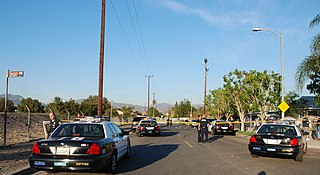
A crime scene is any location that may be associated with a committed crime. Crime scenes contain physical evidence that is pertinent to a criminal investigation. This evidence is collected by crime scene investigators (CSI) and law enforcement. The location of a crime scene can be the place where the crime took place or can be any area that contains evidence from the crime itself. Scenes are not only limited to a location, but can be any person, place, or object associated with the criminal behaviours that occurred.

Trace evidence occurs when objects make contact, and material is transferred. This type of evidence is usually not visible to the naked eye and requires specific tools and techniques to be located and obtained. Due to this, trace evidence is often overlooked, and investigators must be trained to detect it. When it comes to an investigation trace evidence can come in many different forms and is found in a wide variety of cases. This evidence can link a victim to suspects and a victim or suspect to the crime scene.
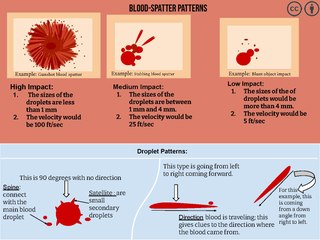
Bloodstain pattern analysis (BPA) is a forensic discipline focused on analyzing bloodstains left at known, or suspected crime scenes through visual pattern recognition and physics-based assessments. This is done with the purpose of drawing inferences about the nature, timing and other details of the crime. At its core, BPA revolves around recognizing and categorizing bloodstain patterns, a task essential for reconstructing events in crimes or accidents, verifying statements made during investigations, resolving uncertainties about involvement in a crime, identifying areas with a high likelihood of offender movement for prioritized DNA sampling, and discerning between homicides, suicides, and accidents.
The International Association for Identification (IAI) is the largest forensic organization in the world. It was originally formed as the "International Association for Criminal Identification" in October 1915. Through the years it has grown into an educational and certification body with over 6,000 members worldwide.

Forensic facial reconstruction is the process of recreating the face of an individual from their skeletal remains through an amalgamation of artistry, anthropology, osteology, and anatomy. It is easily the most subjective—as well as one of the most controversial—techniques in the field of forensic anthropology. Despite this controversy, facial reconstruction has proved successful frequently enough that research and methodological developments continue to be advanced.

Dr. Edmond Locard was a French criminologist, the pioneer in forensic science who became known as the "Sherlock Holmes of France". He formulated the basic principle of forensic science: "Every contact leaves a trace". This became known as Locard's exchange principle.
Shooting incident reconstruction is the examination of the physical evidence recovered or documented at the scene of a shooting. Shooting reconstruction may also include the laboratory analysis of the evidence recovered at the scene. The goal is an attempt to gain an understanding of what may or may not have happened during the incident. Once all reasonable explanations have been considered, one can evaluate the significance of witness or suspect accounts of the incident.

Fire investigation, sometimes referred to as origin and cause investigation, is the analysis of fire-related incidents. After firefighters extinguish a fire, an investigation is launched to determine the origin and cause of the fire or explosion. These investigations can occur in two stages. The first stage is an investigation of the scene of the fire to establish its origin and cause. The second step is to conduct laboratory examination on the retrieved samples.Investigations of such incidents require a systematic approach and knowledge of fire science.

Forensic biology involves the application of biological principles and techniques within the context of law enforcement investigations.
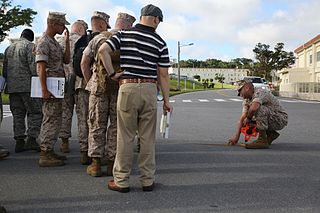
Traffic collision reconstruction is the process of investigating, analyzing, and drawing conclusions about the causes and events during a vehicle collision. Reconstructionists conduct collision analysis and reconstruction to identify the cause of a collision and contributing factors including the role of the driver(s), vehicle(s), roadway and general environment. Physics and engineering principles are the basis for these analyses and may involve the use of software for calculations and simulations. Collision reconstruction is sometimes used as the basis of expert witness testimony at trials. Collision reconstructions are performed in cases involving fatalities or personal injury. Results from collision reconstructions are also sometimes used for making roads and highways safer, as well as improving safety aspects of motor vehicle designs. Reconstructions are typically conducted by forensic engineers, specialized units in law enforcement agencies, or private consultants.
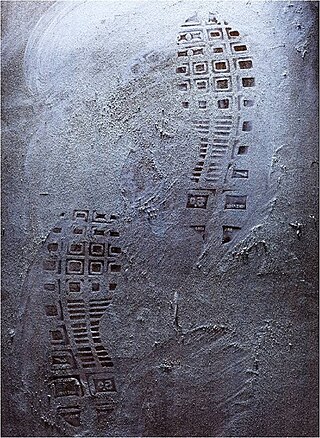
Forensic photography may refer to the visual documentation of different aspects that can be found at a crime scene. It may include the documentation of the crime scene, or physical evidence that is either found at a crime scene or already processed in a laboratory. Forensic photography differs from other variations of photography because crime scene photographers usually have a very specific purpose for capturing each image. As a result, the quality of forensic documentation may determine the result of an investigation; in the absence of good documentation, investigators may find it impossible to conclude what did or did not happen.
The following outline is provided as an overview of and topical guide to forensic science:
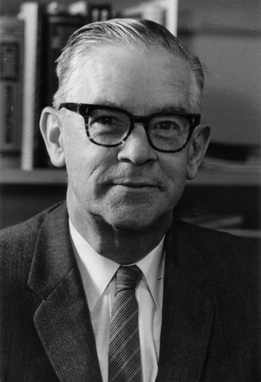
Paul Leland Kirk was a biochemist, criminalist and participant in the Manhattan Project who was specialized in microscopy. He also investigated the bedroom in which Sam Sheppard supposedly murdered his wife and provided the key blood spatter evidence that led to his acquittal in a retrial over 12 years after the murder. The highest honor one can receive in the criminalistics section of the American Academy of Forensic Sciences carries Kirk's name.

Forensic art is any art used in law enforcement or legal proceedings. Forensic art is used to assist law enforcement with the visual aspects of a case, often using witness descriptions and video footage.

Forensic podiatry is a subdiscipline of forensic science in which specialized podiatric knowledge including foot and lower-limb anatomy, musculoskeletal function, deformities and diseases of the foot, ankle, lower extremities, and at times, the entire human body is used in the examination of foot-related evidence in the context of a criminal investigation. Forensic Podiatry has been defined as:
The application of sound and researched podiatry knowledge and experience in forensic investigations, to show the association of an individual with a scene of crime, or to answer any other legal question concerned with the foot or footwear that requires knowledge of the functioning foot.

Investigating Innocence is a nonprofit wrongful conviction advocacy organization that provides criminal defense investigations for inmates in the United States. Investigating Innocence was founded in 2013 by private investigator Bill Clutter to assist nationwide Innocence Project groups in investigating innocence claims. "Once we have a case that meets our criteria, we'll put private investigators to work on it. A lot of these cases need investigators," said Kelly Thompson, executive director of Investigating Innocence. Prior to his work on Investigating Innocence, Clutter was one of the founders of the Illinois Innocence Project. Investigating Innocence also has a board composed of exonerees that reviews incoming cases.
References
- 1 2 "Association for Crime Scene Reconstruction". Archived from the original on 13 December 2019. Retrieved 13 June 2012.
- ↑ Gardner, R., and Bevel, T. (2009). Practical Crime Scene Analysis and Reconstruction . Boca Raton, Florida: CRC Press. pp. 1. ISBN 9781420065510.
{{cite book}}: CS1 maint: multiple names: authors list (link) - ↑ Chisum, W., and Turvey, B. (2007). Crime Reconstruction. Burlington, MA: Academic Press. pp. ix.
{{cite book}}: CS1 maint: multiple names: authors list (link) - ↑ Chisum, W., and Turvey, B. (2007). Crime Reconstruction. Burlington, MA: Academic Press. pp. xviii.
{{cite book}}: CS1 maint: multiple names: authors list (link) - ↑ "Requirements for the Certification of Crime Scene Reconstruction". Archived from the original on 7 September 2009.
- ↑ "International Association for Identification". Archived from the original on 19 June 2012. Retrieved 13 June 2012.
- ↑ "International Association for Identification, Roster of Certified Crime Scene Reconstructionists" (PDF). Archived from the original (PDF) on 18 July 2012. Retrieved 13 June 2012.